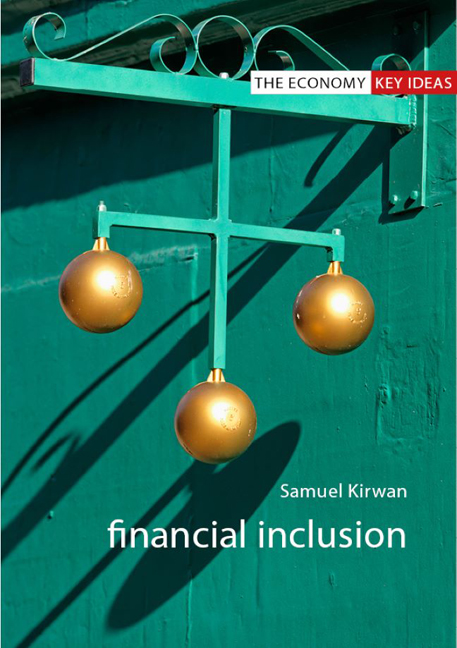Book contents
- Frontmatter
- Contents
- 1 Introduction
- 2 What is financial inclusion?
- 3 Financial inclusion as a tool of poverty eradication: the case of microcredit
- 4 Financial inclusion as the production of new markets: the case of reverse redlining
- 5 Financial inclusion as financial subjectivity: the case of financial capability in the UK
- 6 Financial inclusion as political project: the case of conditional cash transfers
- 7 Financial inclusion as transformations in financial practice: the case of mobile money
- 8 Conclusion
- References
- Index
2 - What is financial inclusion?
Published online by Cambridge University Press: 21 December 2023
- Frontmatter
- Contents
- 1 Introduction
- 2 What is financial inclusion?
- 3 Financial inclusion as a tool of poverty eradication: the case of microcredit
- 4 Financial inclusion as the production of new markets: the case of reverse redlining
- 5 Financial inclusion as financial subjectivity: the case of financial capability in the UK
- 6 Financial inclusion as political project: the case of conditional cash transfers
- 7 Financial inclusion as transformations in financial practice: the case of mobile money
- 8 Conclusion
- References
- Index
Summary
Defining financial inclusion
Considering the diversity of actors and interventions that draw upon the term, as well as the range of spaces and contexts in which it is applied, it is not surprising that there are ongoing tensions over what financial inclusion actually means. The task of defining financial inclusion has been the subject of an ongoing project led by the Centre for Financial Inclusion (discussed further below), recognizing the agreement among key actors for a strategic need for an effective definition, in particular given the bold claims made in the Maya Declaration and elsewhere for its transformative effects.
[We] recognize the critical importance of financial inclusion to empowering and transforming the lives of all our people, especially the poor, its role in improving national and global financial stability and integrity and its essential contribution to strong and inclusive growth in developing and emerging market countries.
With this in mind, it is useful to start with two canonical definitions.
Financial inclusion means that individuals and businesses have access to useful and affordable financial products and services that meet their needs – transactions, payments, savings, credit and insurance – delivered in a responsible and sustainable way.
(World Bank 2020)Full financial inclusion is a state in which all people who can use them have access to a full suite of quality financial services, provided at affordable prices, in a convenient manner, and with dignity for the clients. Financial services are delivered by a range of providers, most of them private, and reach everyone who can use them, including disabled, poor, rural, and other excluded populations.
(CFI 2010)There are clear resonances and similarities between these definitions. Both highlight access rather than use, foregrounding the importance of consumer choice; both are keen to make clear that financial inclusion includes a range of services and not simply the provision of credit. Yet there are subtle differences between them that highlight key questions for further exploration. The first concerns who the subject of financial inclusion is: is it individuals and businesses, or the unbanked? The former suggests that strengthening the private sector is a key aspect of financial inclusion: enabling people to invest and trade rather than simply manage their money.
- Type
- Chapter
- Information
- Financial Inclusion , pp. 7 - 20Publisher: Agenda PublishingPrint publication year: 2021

